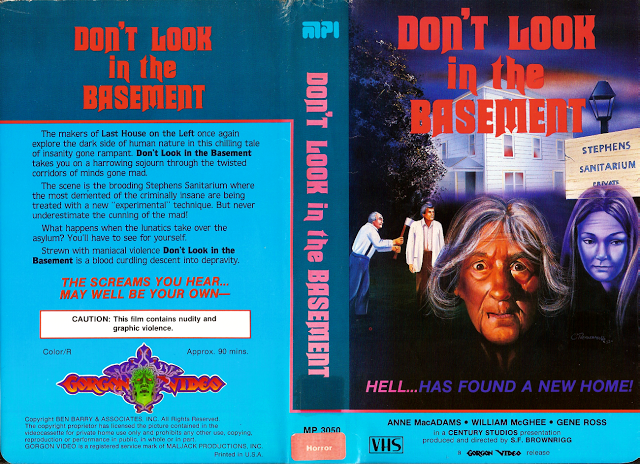 The inmates are running the asylum.
The inmates are running the asylum.
The past few weeks, we’ve been looking at a crop of great new Horror movies. It is reinvigorating our taste for the darkly fantastic, which means we’ve been seeing a lot of great unknown older movies and TV as well. We don’t want to neglect all that has come before, so this week we will look at S. F. Brownrigg’s Don’t Look In The Basement, from 1973.
+
The 70s were a Golden Age for horror movies. The drab earth tones and burned out Kodachrome gives a dark, spectral feel; an eerie impressionism that casts a surreal spell. It is always a treat and a joy to watch a 70s horror film, and we recommend the experience whenever it comes up, even if its bad.
Which, luckily, Don’t Look In The Basement isn’t.
This directorial debut from S.F. Brownrigg, who directed a total of drive-in standards in the ’70s and early ’80s, is actually quite good. It reminds us of the strength of ’70s film, namely plot, pacing, character and mood.
The story revolves around Stephens Sanitarium, an experimental psychiatric hospital run by Dr. Stephens (Michael Harvey), who believes he can cure his patients by allowing them to act their delusions. He encourages Judge (Gene Ross) to sort out his psychosis by hacking at a huge log with an axe, all wide-eyed melodramatic. His optimism and enthusiasm is met with an axe in the back!
Dr. Masters (Annabelle Weenick), Stephen’s colleague, vows to ‘take care of the family’ and is sitting at her desk, trying to figure out what the heck to do, when a pretty young RN, Nurse Charlotte Beale (played by the heavenly Rosie Holotik) arrives. She had been hired by the late Dr. Stephens, and while reluctant, Dr. Masters decides to keep her on.
Hmm… a pretty young nurse shows up at an asylum run rampant with lunatics. What do you think happens?
Sex! Death! Popsicles! Necrophilia!
Don’t Look In The Basement is full of charms. A zany cast of wackos is the main saving grace of this film: there’s Sam, an innocent Man-Child, the product of Dr. Stephens’ last medical experiment, that led him to pursue alternative treatment methods; Harriet‘s only concerned with her baby, which happens to be a doll; Allyson‘s the local nymphomaniac, she’s just looking for love; Sargeant Jaffe is waiting for an enemy that only he can see, that will never come; Judge repeats his name and rank over and over, an incantation of his former self; Mrs. Callingham is a kindly old hag with some excellent soundbytes (listen for the Willy Wonka reference), it is a shame she had her tongue removed so early on in the film; Danny is stuck in adolescence, the perfect stereotypical movie maniac; and Jennifer, a permanent child, probably addicted to drugs.
This cast, combined with some clever writing courtesy of Tim Pope, makes the best of the cheap budget and Gothic setting of an isolated mental institution, to create a mood that is more surreal, moody and menacing than traumatic. Some pretty twisted stuff happens, but the red stuff is kept to a minimum, servicing the plot. It’s great to go back and explore older films, as one is reminded of different ways of doing things, weighing the strengths and weaknesses objectively. The ’70s aura and low budget means Don’t Look… employs vigorous amounts of wonky camera angles, when combined with the madness of the patients and the drab, washed-out earth tones of the film, make it surreal and effective. The fact that it is not out-and-out traumatizing makes the film more unsettling, it gets under your skin, and you feel a little less sane, after viewing. This movie is worth watching for the ending alone, which has to be seen to be believed, and it just goes to show how even the cheapest Horrors contain moments of mind blowing inspiration!
The setting of the Asylum is a trope that seems to be gaining some momentum. In medieval times, the sanitariums were kept on the outskirts of town, foreboding Gothic mansions where madness could be contained, kept separate from the status quo. As time has gone on, and the inhumane conditions of these human warehouses came to light, these citadels of madness closed their gates, and the lunatics were allowed to walk the streets, neutralized with pharmaceuticals. In this day and age, we are surrounded by madness at every turn: in the supermarket, on the bus, late at night. We have to come to grips with insanity, it is in our face, and it is beyond reason. That is why it is useful and insightful to study these Asylum films, to meditate on the condition of Madness, and its implications on society.
In Don’t Look In The Basement, you can’t tell who’s mad and who’s in their right mind. It’s enough to make you question your own sanity, but just keep telling yourself: “It’s only a movie, it’s only a movie”.
Don’t Look In The Basement aka The Forgotten was included as part of England’s infamous Video Nasties list, 72 horror films banned in the UK in the early 80s. Apparently England was trying to contain that plague of madness, but it was too late, too late. As we have said before, with the availability of nearly every drop of culture of the last 2000 years that is the internet, it can be intimidating to know where to turn to find QUALITY, to know where to begin. We remain committed to finding the darkest jewels of the horror genre, and reporting on our findings, so stay tuned, and let us know if there’s something you’d like to see covered.
Expect to hear more about the Video Nasties list, and ’70s Horror in general, in the near future.
Don’t Look In The Basement is in the Public Domain, and can be viewed in its entirety on YouTube
You can find more dark delights and keep yourself busy until next time by peeping Forestpunk’s The Horror playlist, digging out the best full movies uploaded to YouTube.

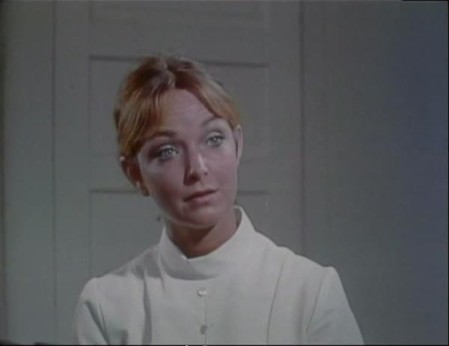
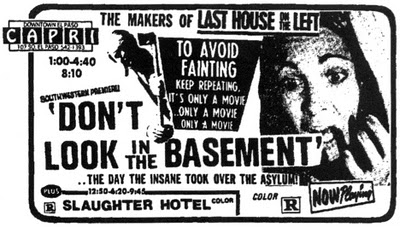




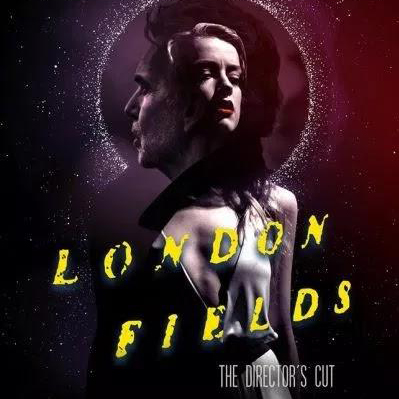
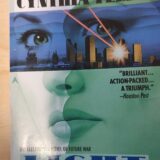



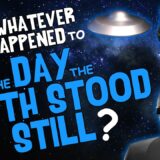
Recent Comments